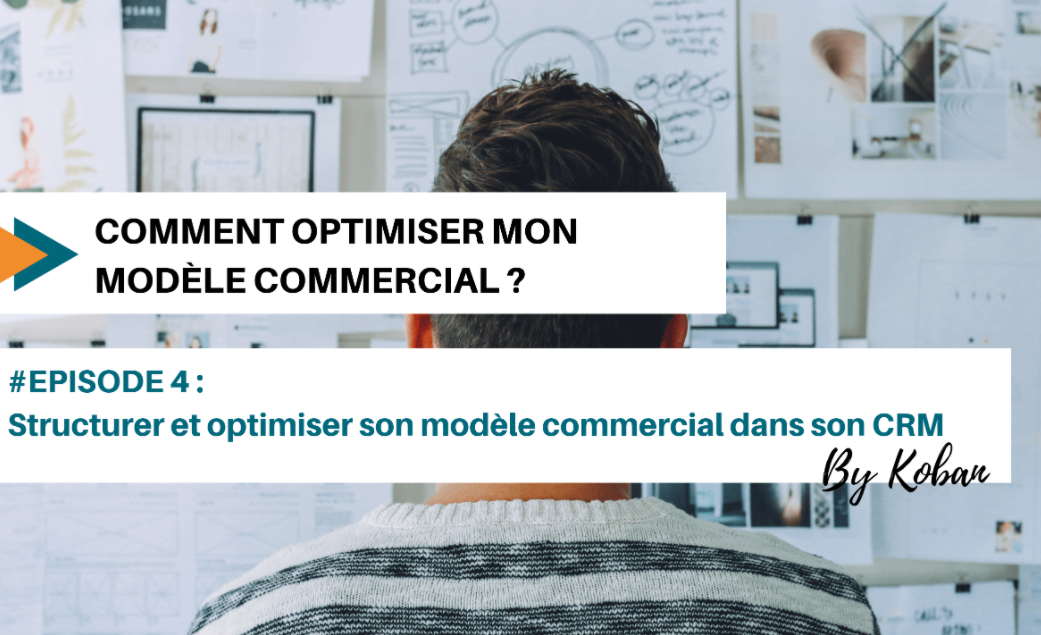Last week, KESTIO discussed on the Koban blog the importance of an optimized business model to increase the efficiency and ROI of your sales activities.
But after clearly defining this model, it still needs to be translated operationally into a suitable tool to track the process daily. And this part can seem quite abstract for people who aren't used to working with a CRM.
As you'll have understood, this week we're going to talk about CRM and, more specifically, how to translate your previously defined business model into a tool such as Koban.
1. A CRM tool for a segmented and actionable database
You have very well defined your customer/prospect segments, but now you need to be able to exploit them. For this, you need a tool that allows you to centralize your data in order to then carry out a clear and precise segmentation.
Theory is great, but how does it work in practice?
- A good CRM allows you to centralize your entire database on a single platform and segment it initially with 'statuses'. The most common statuses are 'customers', 'prospects', 'competitors', etc. The special thing about Koban, for example, is that you can personalize your statuses according to your environment and strategy, which makes your database clearer for you and your employees.
For example, you can create the categories "hot prospects", "cold prospects", "former clients" or any other that seems commercially useful to you.
- TAGS: On each record, you can add tags to segment your database more precisely. Tags are like labels you place “on the heads” of your customers/prospects. For example, you can create a tag category for “industry” or “potential.” This allows you to identify all customers whose tag is equal to “Gold” or “Bronze.” This is very useful for launching highly targeted and personalized sales and/or marketing campaigns.
2. A CRM tool to organize your activity.
You have your strategy, you have your segmented and usable database. It's time to take action!
Indeed, you have defined a list of actions based on your segments; the goal now is not to forget to do them...
Any self-respecting CRM allows you to create customizable action types based on your strategy. You can create as many as you want: task, phone call, email, in-person meeting, phone meeting, video conference, demo, client visit, etc.
The little extra at Koban: you assign a color to each type of action. This way, once in your calendar, you have a very visual rendering that gives you an idea of what your day will be like! Of course, you have access to your colleagues' calendars if you need to make an appointment for them or assign them an action.
3. A CRM tool to save time and automate low value-added tasks.
We all agree on one point: the goal is to save your salespeople as much time as possible so that they can focus on the most profitable customer segments. To do this, CRM and marketing have a role to play.
Does automation resonate with you?
SALES AUTOMATION
You have defined high-potential segments and others with fewer stakes that you can easily identify using your centralized and segmented database.
The goal is to let salespeople handle the most interesting segments and leave the others to... automation (or more precisely, to marketing).
To do this, your CRM will allow you to set up automated scenarios (generally composed of a series of pre-defined emails) that aim to spark your contact's interest, maintain contact without being intrusive, and drive conversion.
This frees up a lot of time for sales representatives and, above all, avoids cold calls, which are very often a waste of time (and therefore money). Not only do the responses go directly to the assigned sales representative, but the results of your 'prospecting' emails are directly linked to the prospect's record (when they read the email, if they clicked, etc.). Thus, if the internet user has shown enough interest, the marketing teams can easily or automatically pass the lead on to a sales representative, who will have their entire history.
DAILY AUTOMATIONS
Beyond automated scenarios, you can set up numerous automations that save time and, above all, prevent you from forgetting reminders or appointments. Yes, a salesperson's brain is full, and it can happen that they forget...
For example, you can set an automatic action in the sales representatives' calendar at the end of each appointment, such as: "send product sheet". Or, schedule recurring visits to your "OR" clients every 4 months. The time slot will be blocked in the calendar, which reduces the risk of forgetting or constantly postponing!
LEAD SCORING
Okay, now we're going to move on to some more advanced features, but they are very worthwhile! To explain it to you very briefly, you can track your website (record visits to your site) and assign points to each page of your site.
As a result, a user will visit your pages and accumulate points as they browse. The goal? To assess their interest and determine if they are "ready" to be directly passed on to the sales force.
Below a defined threshold of points, the user will only receive emails via an automated marketing scenario. On the other hand, above the defined score, the user will be assigned to a dedicated salesperson because they have shown a strong interest in your products / services!
These are just very brief examples of everything you can do and automate in a CRM tool like Koban. These examples illustrate the importance of supporting your business model with features like these to increase your profitability and productivity on a daily basis.
To learn more about CRMs and help you with your projects, find all of our methods and tools here:
1 : And for those who wish to (re-)discover the first article, written by KESTIO and published on the KOBAN website, it's here: What is a sales model and how do you build it?
KESTIO and KOBAN, it's a partnership that feels natural: the former supports SMEs in their commercial development through an online sales coaching platform for leaders, managers and sales representatives; the latter helps them to effectively deploy their strategy and commercial actions by generating maximum ROI, via a high-performance CRM solution.
From this meeting was born an idea (which became a desire, then a reality): to combine our skills and visions to support you in defining and implementing your business model!





